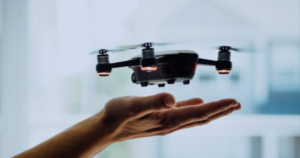
Automatic Dependent Surveillance-Broadcast, also known as ADS-B, will become mandatory in all air crafts starting in 2020 for a number on controlled airspaces. This includes civilian helicopters which have grown in popularity by more than 38% within the last decade.
This innovative technology will enable air traffic controllers to get real-time broadcasts of the flight patterns and altitudes from a variety of air crafts.
This includes all individuals flying in Class A airspaces, but there are special circumstances pertaining to Classes B, C, E, and Mode C Veil. According to the Federal Aviation Administration, any airspaces that also require that crafts carry a Transponder will need the Version 2 ADS-B Out system.
This technology is also essential for drone makers, some of whom have started equipping this feature on newer models.
Leading the charge is Chinese drone maker, DJI. With more than 70% of the drone market share, DJI is the largest commercial and civilian drone producer in the world. Upon hearing the recent announcement by the FAA, DJI began developing ADS-B sensing technology for their new line of drone, dubbed Air Sense.
Air Sense works by alerting the pilot of the drone when it senses an airplane or helicopter nearby. The pilot can then make adjustments to their flight pattern in order to avoid a collision with the larger aircraft which could wreck the drone.
So far, DJI has implemented these sensors on their professional drones which gear toward aerial photography and videography. But this technology won’t be limited to the Matrice 200 and the Mavic 2 Enterprise. DJI plans to include these precautionary sensors in all of their drones from here on out. Definitely more secure than the first locks created in Egypt 4,000 years ago.
And this isn’t the first time DJI has experimented with obstacle avoidance. DJI has already implemented altitude limits and geofencing capabilities in the past. They even programmed some of their drones to automatically return to its takeoff spot with the flick of a button.
DJI also notes that the sensor technology does not automatically cause the drone to move out of the way when it senses a larger aircraft. Controlling the operations of the drone in flight still rests on the shoulders of the user.
For now, the FAA doesn’t mandate that all drones must be equipped with this type of sensor.






